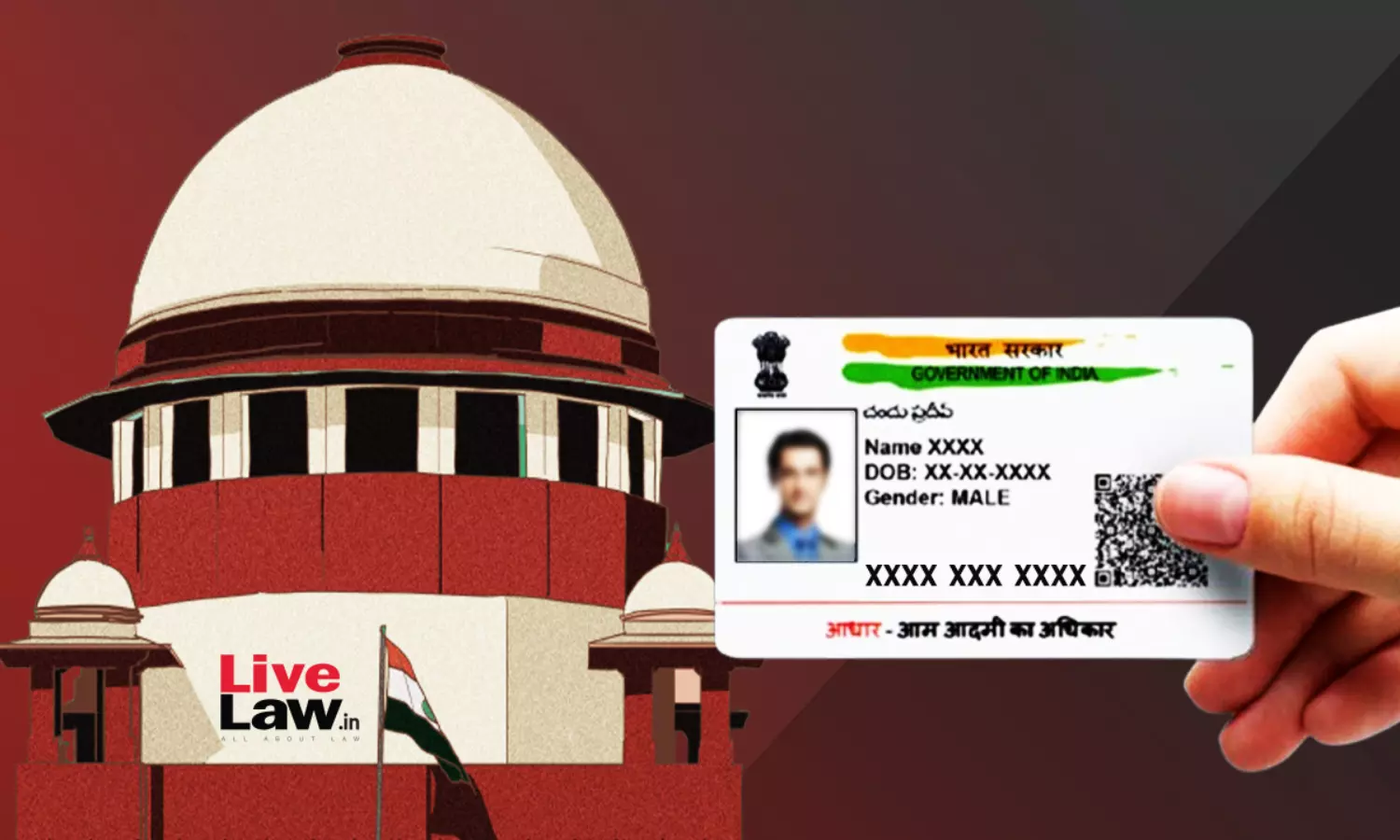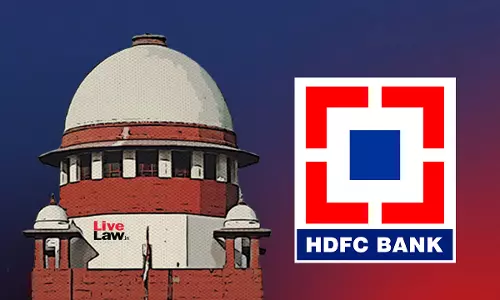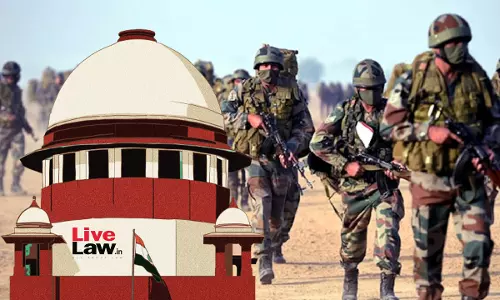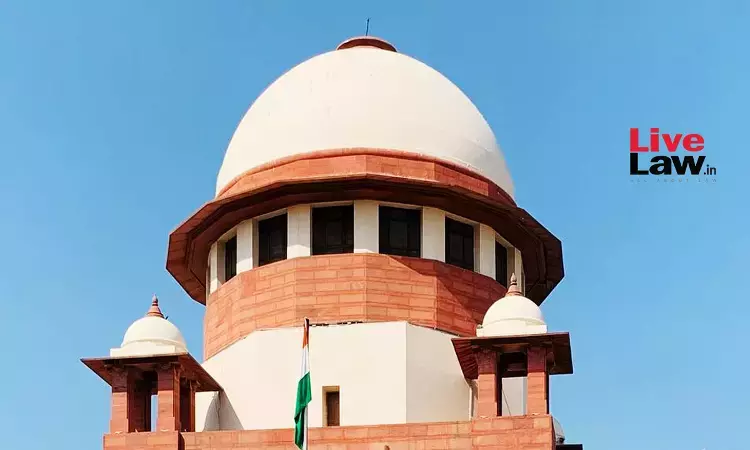
The Supreme Court today set aside a High Court's decision to accept the date of birth mentioned in the Aadhaar Card to determine the age of the victim in a motor accident compensation case. The bench comprising Justices Sanjay Karol and Ujjal Bhuyan was not inclined to accept the suitability of the Aadhaar Card as proof of age. The Court observed that instead of referring to the date of...
The Supreme Court today set aside a High Court's decision to accept the date of birth mentioned in the Aadhaar Card to determine the age of the victim in a motor accident compensation case.
The bench comprising Justices Sanjay Karol and Ujjal Bhuyan was not inclined to accept the suitability of the Aadhaar Card as proof of age. The Court observed that instead of referring to the date of birth mentioned in the Aadhaar Card for determining the age of the deceased, the age of the deceased can be more authoritatively determined from the date of birth mentioned in the school leave certificate having statutory recognition under Section 94 of the Juvenile Justice (Care and Protection of Children) Act, 2015.
It was the case where the compensation of Rs.19,35,400/- decided by the Motor Accidents Claim Tribunal (MACT) was reduced to Rs.9,22,336/- by the High Court upon noting that the MACT had wrongly applied the age multiplier while determining the compensation to deceased LRs. The High Court upon relying on the date of birth mentioned in the deceased Aadhar Card, calculated his age as 47 years and applied the multiplier of 13.
The appellants/ Legal Representatives challenged the High Court's decision contending that the High Court erred in referring to the Aadhar Card to calculate the deceased age. They referred to the deceased's School Leave Certificate to contend that his age at the time of the incident was 45 years and accordingly multiplier of 14 would apply.
Finding force in the appellant's contention, the judgment authored by Justice Karol discussed various High Court decisions on the point of whether an Aadhar Card can serve as proof of age.
Some of the decisions discussed are as follows:
“In Manoj Kumar Yadav v. State of M.P, the MP High Court held that when it comes to establishing the age, on a plea of juvenility the age mentioned in the Aadhar Card could not be taken as a conclusive proof in view of Section 94 of the JJ Act.
In Navdeep Singh & Anr. v. State of Punjab & Ors, the Punjab & Haryana High Court held that Aadhar Cards were not “firm proof of age”.
In State of Maharashtra v. Unique Identification Authority of India And Ors., the Bombay High Court took reference to the UIDAI Circular no. 08 of 2023 stating that an Aadhar Card, while can be used to establish identity, it is not per se proof of date of birth.
In Gopalbhai Naranbhai Vaghela v. Union Of India & Anr., the Gujarat High Court directed the release of the petitioner's pension in accordance with the date as mentioned in the School Leaving Certificate, keeping aside the difference in the date of birth as mentioned in the Aadhar Card, which was not relevant for the purpose of such consideration.
In Shabana v. NCT of Delhi, the Delhi High Court recorded the UIDAI's statement that an “Aadhar Card may not be used as proof of date of birth.”
The Court also noted the Unique Identification Authority of India, by way of its Circular No.08 of 2023, has stated, that an Aadhar Card, while can be used to establish identity, it is not per se proof of date of birth.
In essence, the bench was not convinced of the suitability of the Aadhar Card as proof of age.
“That being the position, as it stands with respect to the determination of age, we have no hesitation in accepting the contention of the claimant-appellants, based on the School Leaving Certificate. Thus, we find no error in the learned MACT's determination of age based on the School Leaving Certificate.”, the court observed.
Applying a multiplier of 14 and keeping future prospects to be 25% instead of 30% as fixed by MACT, the Court upon applying the law laid down in the National Insurance Co. Ltd. v. Pranay Sethi (2017) judgment directed the respondents to pay Rs.15,00,000/- as compensation to the Appellant.
“The appeals are allowed, the total amount, i.e., Rs.14,41,500, in the interest of just compensation is rounded off to Rs.15,00,000/- with 8% interest from the date of filing of the claim petition to be released to the rightful claimants in the manner directed by the Tribunal.”, the court held.
Case Title: SAROJ & ORS. VERSUS IFFCO-TOKIO GENERAL INSURANCE CO. & ORS., C.A. No. 012077 - 012078 / 2024
Citation : 2024 LiveLaw (SC) 837
Click here to read/download the judgment
Appearance:
For Petitioner(s) Ms. Srishti Choudhary, Adv. Ms. Shefali Choudhary, Adv. Ms. Namita Choudhary, AOR
For Respondent(s) Mr. Suyash Vyas, Adv. Mr. Gopal Singh, AOR Mr. Anil Hooda, Adv. Mr. Shafik Ahmed, Adv. Mr. Ajay Sharma, Adv. Mr. Sunny, Adv. Mr. Satendra Singh Baghel, Adv. Mr. S. Srinivasa Chary, Adv. Mr. Manoj Kumar, Adv. Ms. Parul Priya, Adv. Ms. Anupama Singh, Adv. Mr. Varun Mishra, AOR




